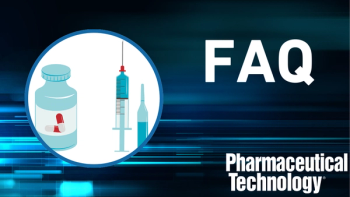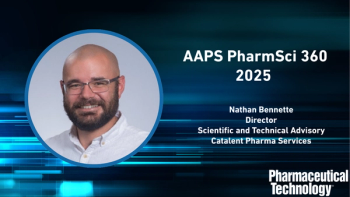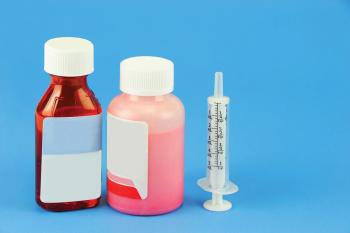
- Pharmaceutical Technology-06-02-2019
- Volume 43
- Issue 6
Enhancing Bioavailability with Hot-Melt Extrusion
Discussing the advantages, limitations, and recent advances of HME with experts from AbbVie.
Hot-melt extrusion (HME) is a well-known process within industry, being used since the 1930s, and more recently has found prominence in the pharma industry within the application of enhancing the bioavailability of APIs. As the industry is witnessing a surge in the number of poorly soluble drug molecules entering the development pipeline, techniques to improve solubility will inevitably continue to experience growth.
To learn more about HME, its advantages, limitations, and recent advances, Pharmaceutical Technology spoke with Michael Dennis, director of technical operations, science and technology, and Bill Huang, senior principal research scientist, formulation sciences, both from AbbVie.
PharmTech: Can you give a brief overview of HME and how it can aid in solubility/bioavailability enhancement?
Dennis and Huang (AbbVie): Historically, HME was used to convert raw materials into a homogenous solid with a particular shape. In pharmaceuticals, it also enables dissolution of APIs into a polymer to form a matrix known as an amorphous solid dispersion (ASDs). ASDs achieve higher apparent solubility and faster dissolution for enhanced absorption of poorly soluble compounds (BCS Class II and IV).
In an ASD, solute molecules are dispersed molecularly randomly within the amorphous carrier. This allows for a drastic significant increase in the apparent solubility and dissolution rate achieving high bioavailability and better human pharmacokinetic/pharmacodynamic performance. A rationally formulated ASD generates drug-rich amorphous nanodroplets that maximize the surface area of the compound for improved absorption when contacting the dissolution medium as the carrier dissolves.
While this technology is gaining significant traction in the pharmaceutical industry, especially in the oncology therapeutic area, it is key for anyone developing in this area to have a solid understanding of HME or to partner with someone with a strong and long tenure in understanding its nuances to ensure timely entry into the market.
PharmTech: What are the advantages afforded by HME over other available technologies/solutions aimed at enhancing solubility/bioavilability?
Dennis and Huang (AbbVie): A major advantage is that it does not use organic solvents. This significantly reduces or minimizes both environmental and safety concerns. In spray drying, an alternative method for manufacturing ASDs, for instance, organic solvents are required to dissolve the polymer and drug and then the solvents are removed during spray drying and a subsequent product drying step.
Other benefits of HME when comparing to other techniques, such as spray-drying, is that it offers shorter cycle times, a smaller footprint, and lower capital costs, which all add to its efficiency. Moreover, it is inherently a continuous unit operation, allowing fast development and scalability. HME is well placed to serve as an effective anchor for an integrated continuous manufacturing line, whether that means sequencing a continuous blender to the extruder or sizing and compressing unit operations downstream.
A well-developed ASD formulation and HME process is robust and well controlled, enabling the production of consistent product quality both intra- and inter-batch. Furthermore, HME provides an option to formulate drug products for molecules which have zero or limited solubility in organic solvents.
PharmTech: Are there specific limitations of HME that should be considered?
Dennis and Huang (AbbVie): Since HME depends on melting the polymer and drug, thermally sensitive API molecules and potentially some polymers may not be suitable. Additionally, as a result of the inherent characteristics of BCS Class II and IV API molecules, it is challenging to attain high drug loading in many cases. Further, the choice of pharmaceutical grade polymers and surfactants that are suitable for HME is still very limited.
PharmTech: Could you highlight the most recent advances in HME?
Dennis and Huang (AbbVie): Absolutely, there are numerous efforts being made by industry to advance HME. For example, the understanding of fundamental aspects of formulation and drug release has been dramatically improved in recent years, which is aiding HME product and process design and development. We have also seen industry embrace the rigorous application of physicochemical characterization tools that are helping in the understanding of the impact of physical and thermal properties of materials (constituent components as well as drug-polymer and drug-surfactant interactions) on HME processing and product characteristics. We are also seeing a surge in the use of one-dimensional and three-dimensional computational models to optimize HME processes, which is a result of computational power increases and more efficient algorithms for discrete element models and computational fluid dynamics. Through this improved understanding, it is becoming easier to develop robust formulations and processes with reduced development time and costs.
Various custom in-house modeling tools have been developed by companies, enabling scientists to select the appropriate polymers, surfactants, and drug concentration, which is supporting faster and more efficient drug development. Additionally, in recent years, there have been significant research efforts made by excipient suppliers to advance HME through the development of new polymer systems (e.g., hypromellose acetate succinate and graft polymers).
In addition to HME processes being applied to traditional solid oral drug products, they are also now being used in the formulation of biodegradable implantable products, such as poly lactic acid- and poly glycolic acid-based implants.
Article Details
Pharmaceutical Technology
Vol. 43, No. 6
June 2019
Page: 25
Citation
When referring to this article, please cite it as Pharmaceutical Technology Editors, “Supply Chain Risk and Security Maturity Evolution,” Pharmaceutical Technology 43 (6) 2019.
Articles in this issue
over 6 years ago
Hovione Technology Develops Blister-Based Inhalerover 6 years ago
Enabling Technologies Advance Poorly Soluble Highly Potent APIsover 6 years ago
Pharma Facilities Still Have a Lot to Learnover 6 years ago
Filling the Early Intermediate Security Gapover 6 years ago
As Easy as ABC?over 6 years ago
Regulating Cannabis-Based Medicines in Europeover 6 years ago
Supply Chain Risk and Security Maturity Evolutionover 6 years ago
On the Right Trackover 6 years ago
Looking Beyond the Solubility HorizonNewsletter
Get the essential updates shaping the future of pharma manufacturing and compliance—subscribe today to Pharmaceutical Technology and never miss a breakthrough.





